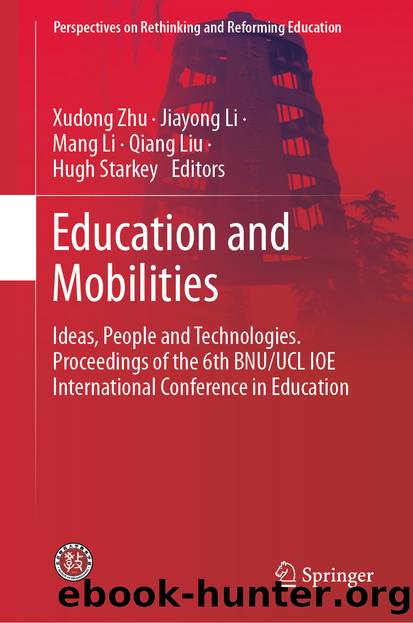Education and Mobilities by Unknown

Author:Unknown
Language: eng
Format: epub
ISBN: 9789811390319
Publisher: Springer Singapore
9.2 A New Role for the English Teacher and for the Students
The first, and arguably most important, of the key changes in this revised curriculum is the new and much changed role of the English teacher in the teaching, decision-making and resource selection for English teaching in China. The reassessment of the Confucian heritage in relation to the role of teachers and pupils in training for a role in the central administration has evolved over a long period of time. In the modern PRC, the figure of Confucius has been a central feature of revisionist assessments, so he is now presented as the central cultural philosopher, underpinning many aspects of Chinese life, but especially teaching and relationships between teachers and students. Confucius (551–479 B.C.) characterised himself as a teacher, and his legacy has left a very special and distinctive place in Chinese culture and society for teachers (Gu 2005; Rao 1998; Xu et al. 2006, Wang 1999). The modern revisionist representation of Confucius suggests that the teacher plays a dominant and mastery role in the teaching process (Rao 1998). Teachers it is argued, in the traditional context, should already have mastered a profound body of knowledge and have correct answers at all times (Brick 1991) and exert control over the class all the time (Tang and Absalom 1998). Such representations are modern manifestations of a desire to legitimate what takes place currently. Confucius suggested that the teacher should be a paragon of virtue and learning for students to follow (Rao 1998; Scollon 1999; Wang 1999; Xu et al. 2006). As a result, English teaching across the PRC has in general been seen as quite teacher-centred and teacher-dominated (Adamson et al. 2000; Jin and Cortazzi 2006). However, it could be argued also that almost all curriculum subjects have been taught in this manner. Confucianism, or at least a revised version using his name as a reference point, has become more widespread in the last decade than at other times in the history of the PRC (Yu 2008). However, a different view of the teacher in the curriculum appears to be emerging within the 2011 revised policy for the teaching of English, while suggestions for change in content in the revised curriculum challenge past perspectives.
The changes inherent in the 2011 curriculum reflect the adoption of language teaching practices that aim to develop greater communicative competence and to teach children not only to ‘know’ about English but also to be able to use it in the modern world—in speech as well as in writing (Liao 2004; Hu 2002). To understand, in detail, what the revised curriculum envisages, an analysis of the 2011 curriculum was undertaken, specifically focusing on the main objectives (MOE 2011, pp. 8–24) and on the final teaching suggestions section of the materials (MOE 2011, pp. 25–33) to identify the role the teacher needs to adopt to follow the suggestions and to achieve the objectives. Some aspects of that analysis are discussed in what follows.
Download
This site does not store any files on its server. We only index and link to content provided by other sites. Please contact the content providers to delete copyright contents if any and email us, we'll remove relevant links or contents immediately.
The Monuments Men by Robert M. Edsel(1485)
Things Are What You Make of Them: Life Advice for Creatives by Adam J. Kurtz(1450)
The Freelance Manifesto: A Field Guide for the Modern Motion Designer by Joey Korenman(1226)
101 Gag Ideas: Companion to the One Minute Caricature by James van der Keyl(1087)
Find Your Artistic Voice by Lisa Congdon(1057)
Boom by Michael Shnayerson(1024)
The Business of Being an Artist by Daniel Grant(973)
Your Art Will Save Your Life by Beth Pickens(949)
The Lady in Gold by Anne-marie O'connor(943)
Your Inner Critic Is a Big Jerk by Danielle Krysa(935)
Create Your Art Career by Rhonda Schaller(931)
Breakfast at Sotheby's(916)
Seven Days in the Art World by Sarah Thornton(914)
How to Survive and Prosper as an Artist by Caroll Michels(865)
33 Artists in 3 Acts by Sarah Thornton(853)
When Talent Isn't Enough: Business Basics for the Creatively Inclined by Kristen Fischer(837)
Art Held Hostage by John Anderson(826)
The Graphic Designer's Guide to Better Business Writing by Barbara Janoff & Ruth Cash-Smith(814)
Art of the Deal by Noah Horowitz(813)
